A Hidden Beauty | Exploring the Massachusetts and Rhode Island Farm Coast
Verdant fields roll down to the water and artists gather in a magical land called the Farm Coast. Learn more about this special corner of Massachusetts and Rhode Island.
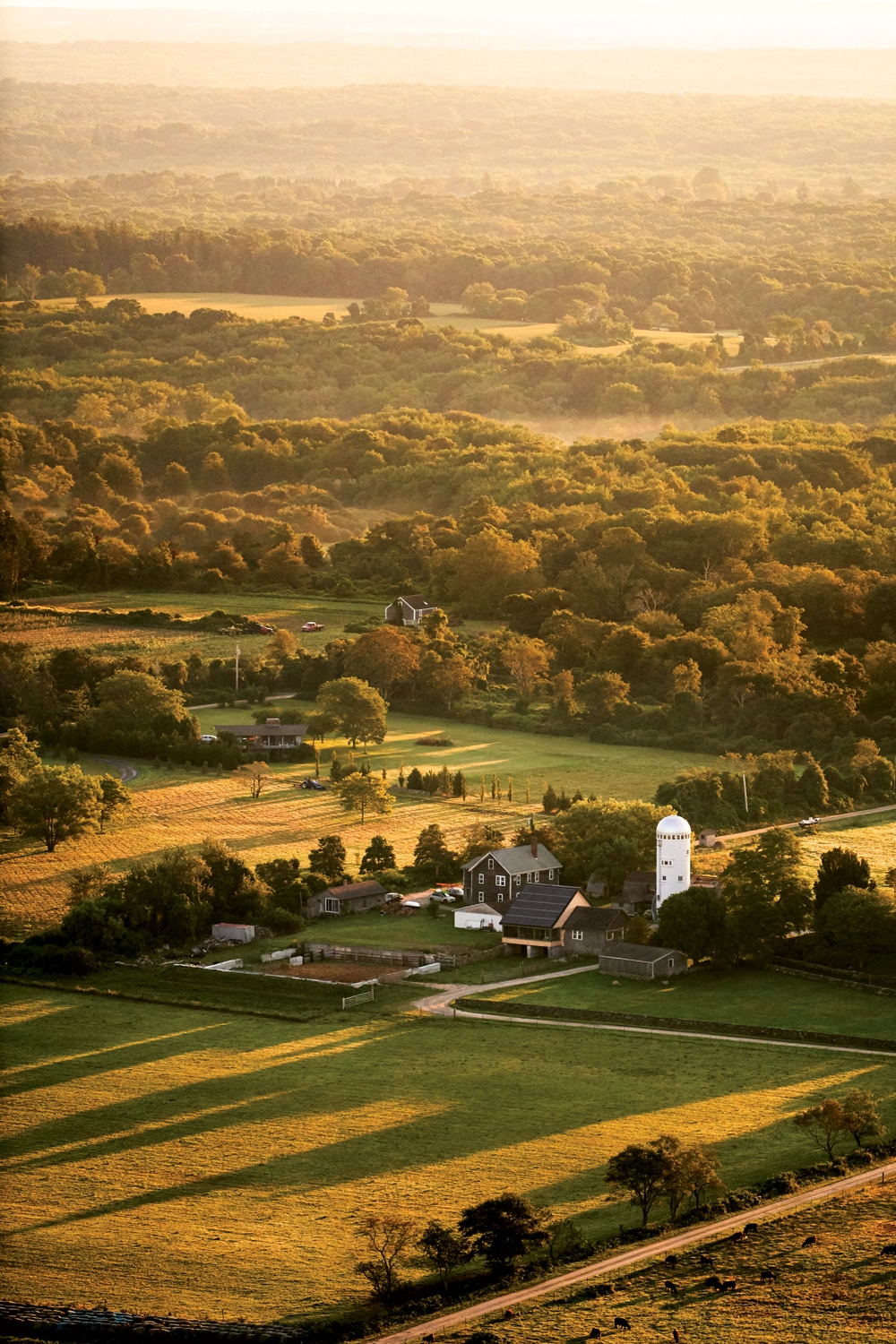
The dual personality of the Farm Coast shines through in a sweeping view of Little Compton’s pastures and woodlands.
Photo Credit : Mark FlemingFirst, I become aware of the light—nudging insistently.
It brushes the tops of hay bales, rolled into tight spirals. It spreads out like butter across fields of fresh-cut grass baking in the sun, scenting the air in these deep southern reaches of Rhode Island. The drifting odor of a well-kept barn.
Sweet, dry, drying on this hot summer day in Tiverton.
Off to the west, light flicks across the water, sparkles in the deep dimples of salty Narragansett Bay. More fields unfurl down to the brine—an unexpected pairing that works, like salt and pepper. And now, driving deeper into a world of boats and barns, I am caught, suddenly, in a tangle of narrow roads channeled between stone walls of such height and artistry that by rights they could seek their own representation.

Photo Credit : Mark Fleming
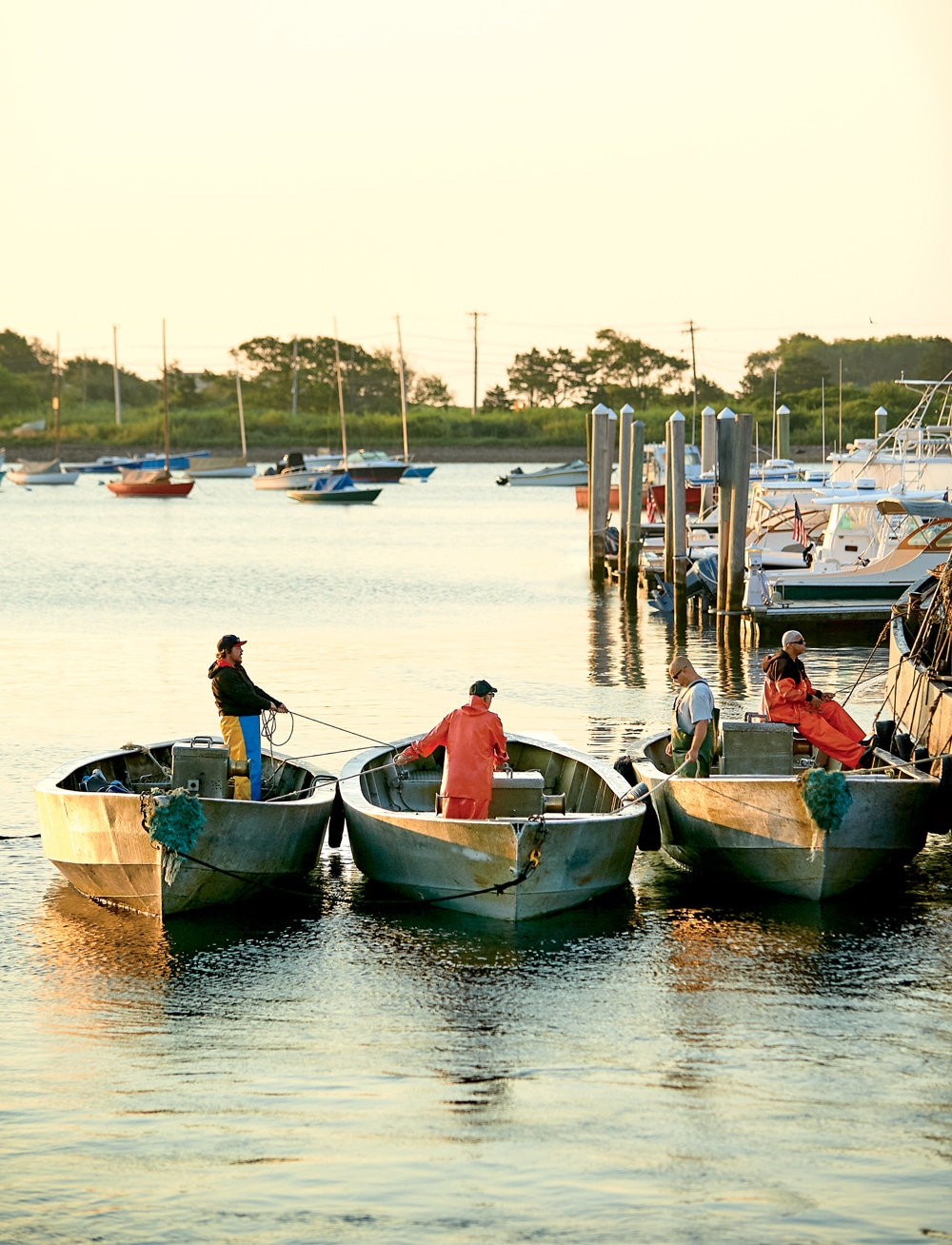
Photo Credit : Mark Fleming
This is the Farm Coast. On a map, it is a blip, no bigger than a thumbnail, stretching from Tiverton down to Little Compton, then east into Massachusetts, to include Westport and Dartmouth. Up close, however, it is stamped with its own particular beauty: sudden bursts of meadow, shingled barns, blue water, and tidy rows of things green and growing.
Possibly potatoes. I spot a sign with a brown squiggle … I think it’s meant to be a spud. But the biggest, most exuberant crop seems to be farm stands. They are everywhere—such as Walker’s Roadside Stand, in Little Compton, where Coll Walker has been ensconced for 40 years, spilling out fresh-picked summer squash, round-faced sunflowers, fuzzy peaches.
I’ve heard about this stretch of farmland mingling with the coast for years. And now that I’m finally here, I discover something unexpected.
There’s no fanfare.
The farmers are farming. The fishermen are off gathering their fruits of the sea. Artists—a heap of them—are taking it all in and giving it back. There’s a lot of space. A quiet, wide-spreading feeling that makes it easy to take a deep breath.
It’s also gorgeous.
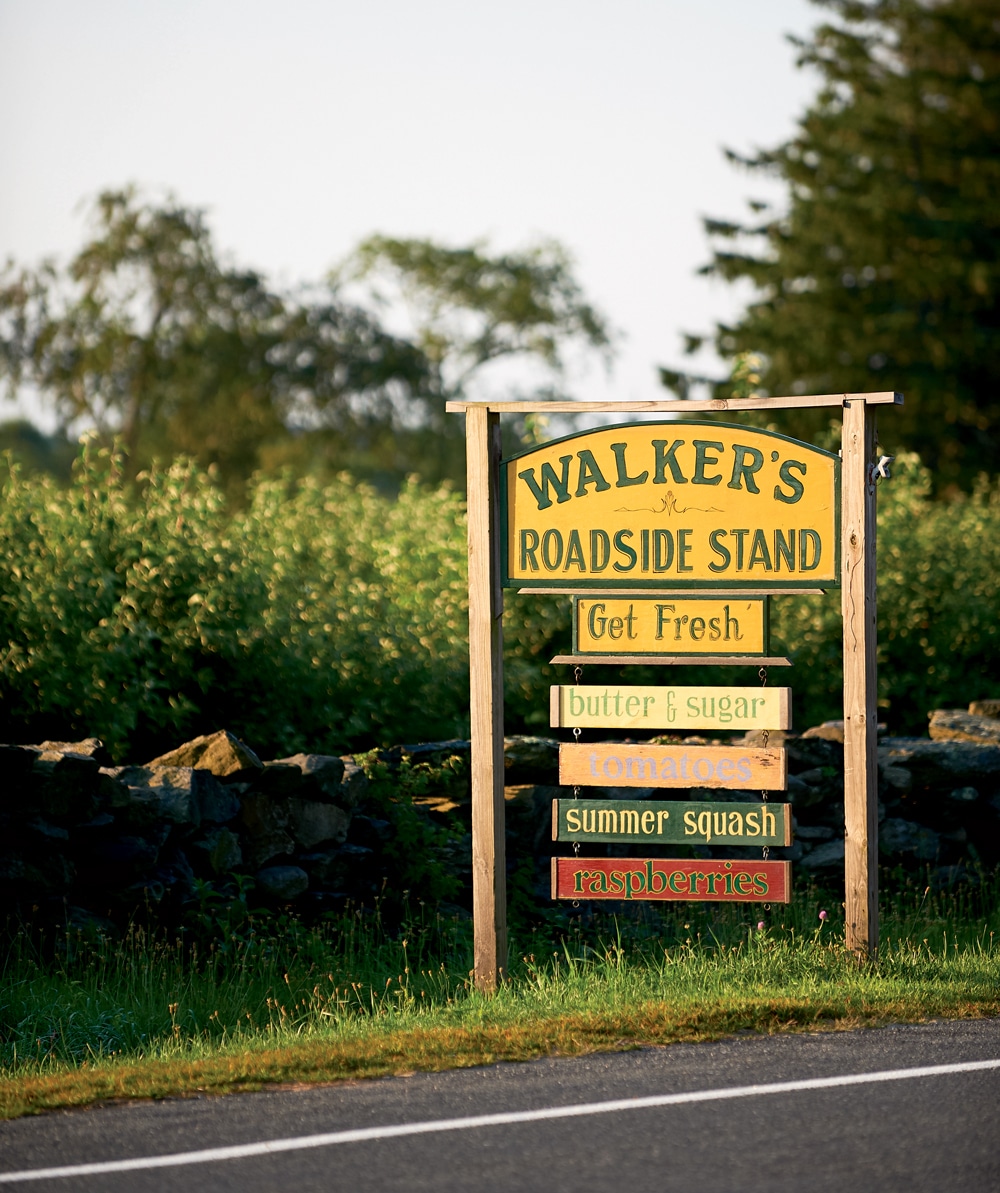
Photo Credit : Mark Fleming

Photo Credit : Mark Fleming
Putting the Farm in Farm Coast
When I pull into Pardon Gray Preserve to meet Wayne Browning of the Tiverton Land Trust, there’s a painterly cast to the early-morning light sifting over the land, misty at the edges of the old Gray Family Historical Cemetery nestled into the fields.
Swaths of this 230-acre preserve, open to the public and owned by the trust, are freshly mown thanks to Bill Hathaway, a farmer who lives across the street. Besides mowing the fields, Bill collects antique farm equipment and displays it here. Lots of it. Even teenagers revel in the visuals, Wayne says. “They come to take their pre-prom photos. It’s their way of being proud of where they come from, of saying, This is what my town is like.”
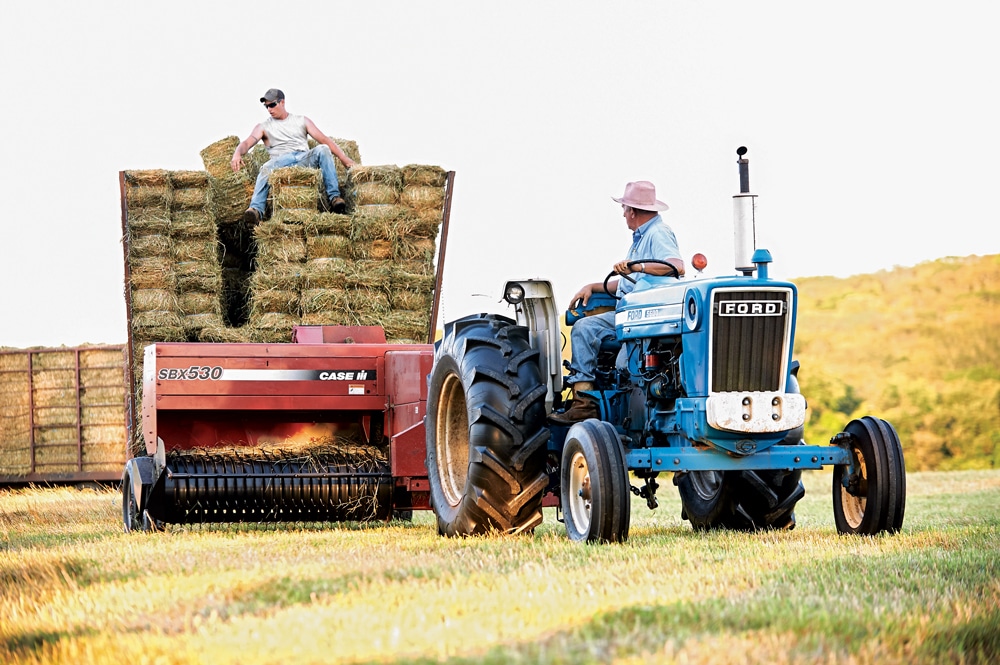
Photo Credit : Mark Fleming
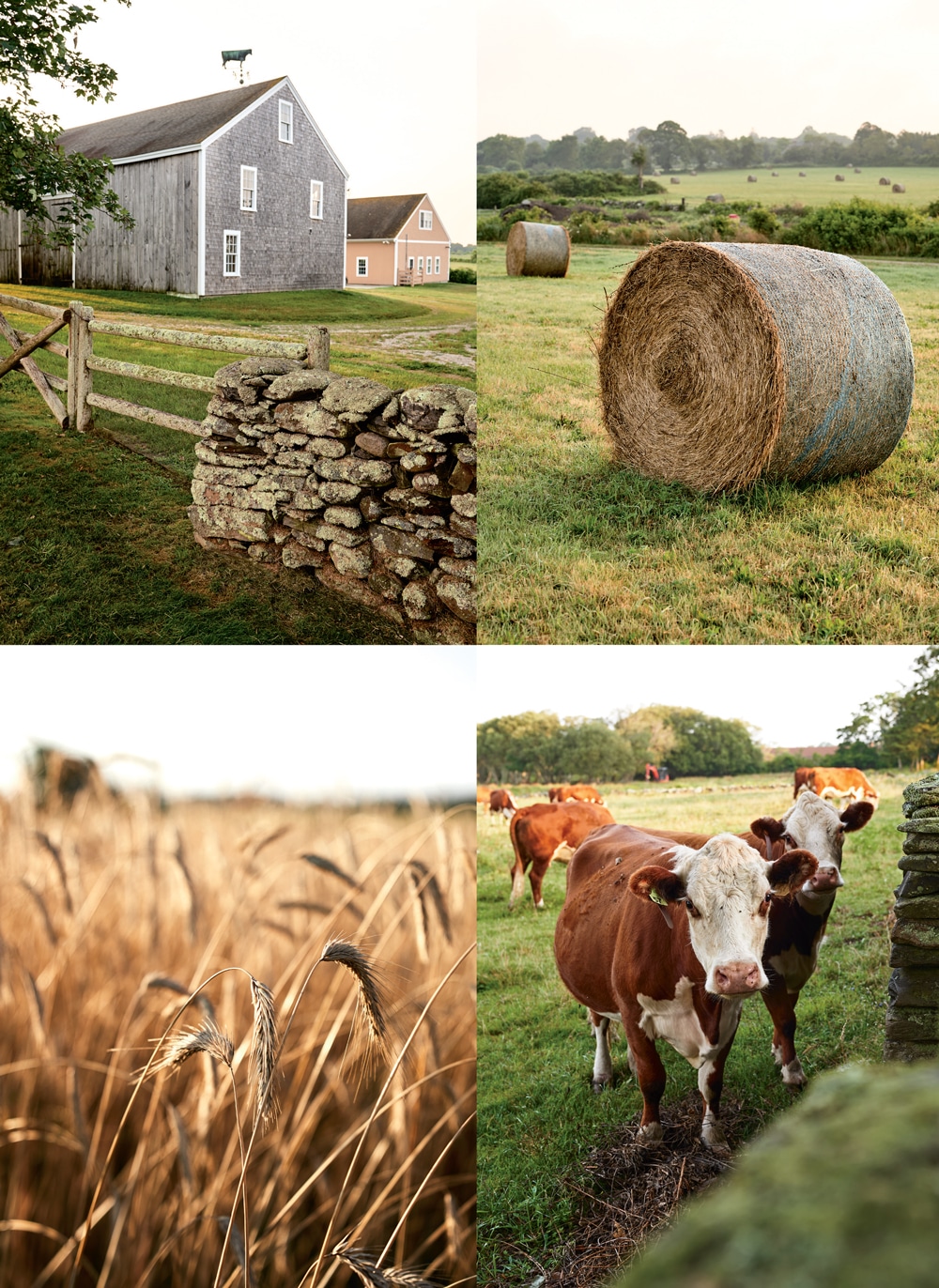
Photo Credit : Mark Fleming
The fields stretch on like summer, golden and green, but they’re also a measure of how locals feel about their farm legacy. “In the late 1990s, a developer had high hopes of putting in 120 homes,” recalls Bill, who then gestures at an inscribed stone slab. “The people named on that rock got together and raised $1.2 million to buy it.” Today, “we’re restoring it to good agricultural land,” he says proudly.
But right now, it’s a farmer’s waiting game, with a good stretch of sun needed to dry out the hay. In a few weeks, giant rolls of hay will dot the landscape. “Late afternoon, around 4 o’clock, when the sun’s at the right angle, people start slamming on their brakes. It really is a pretty sight.”
Which brings us to…
A Word About Art
Tiverton Four Corners, a short drive away, is hopping.
An unlikely hotbed of activity, this speck on the landscape—more than 300 years in the making—is perfectly sized for New England’s tiniest state. Imagine a compact collection of 18th- and 19th-century buildings (roughly two dozen shops) clustered around a crossroads: the literal “four corners.” It’s been restored to captivating prettiness thanks to James and Rosalind Weir, who discovered the village in 1984 and renovated it for the next 30 years.
Food anchors two of the corners. Provender, housed in an 1876 Victorian dowager, is a bustling gourmet food shop with the feel of a beautifully styled country store: hydrangea blooms offsetting Chocolove artisanal chocolate. The famous Gray’s Ice Cream has a non-diminishing line every time I pass it. But this weekend in July also happens to be the annual South Coast Artists Open Studio Tour, with more than 50 artists and galleries to visit. “I come every year from Weston, Massachusetts, for this,” says a woman who’s puzzling over the tour map. “The artists are so friendly and eager to talk about their artwork.”
I duck into Arch Contemporary Ceramics for a quick chat with potter Charlie Barmonde, and I discover that my anonymous tipster was right. Antiques shops lure me down Puncatest Neck Road—the midcentury doodads, ’60s patio furniture, and salvaged shutters are a photographer’s dream.
But this landscape is its own kind of artwork. Water views slide in where you least expect them. Also where you fully expect them. And who could have imagined so many gambrel-roofed barns, rising everywhere?
Driving down Fogland Road, a long, cool tunnel of trees, I stop at Fogland Farm Studio, also on the art tour. The setting is an exceptionally beautiful farm, where Martha Mullen Taradesh’s seascapes hang in her shingled studio. A handsome barn sits beyond, three donkeys posing in a corral. Fields drift toward a distant tree line. The 1726 house stands sentinel. And a Guerrilla Girls manifesto—a welcome throwback to the ’80s—flutters on the studio door. Martha looks delighted when I mention it. Tenet no. 4 of The Advantages of Being a Woman Artist: “Knowing your career might pick up after you’re 80.”
I am on the artists’ Farm Coast, for sure—a fact punctuated with an exclamation point when I trip over the Art Café, in Little Compton.
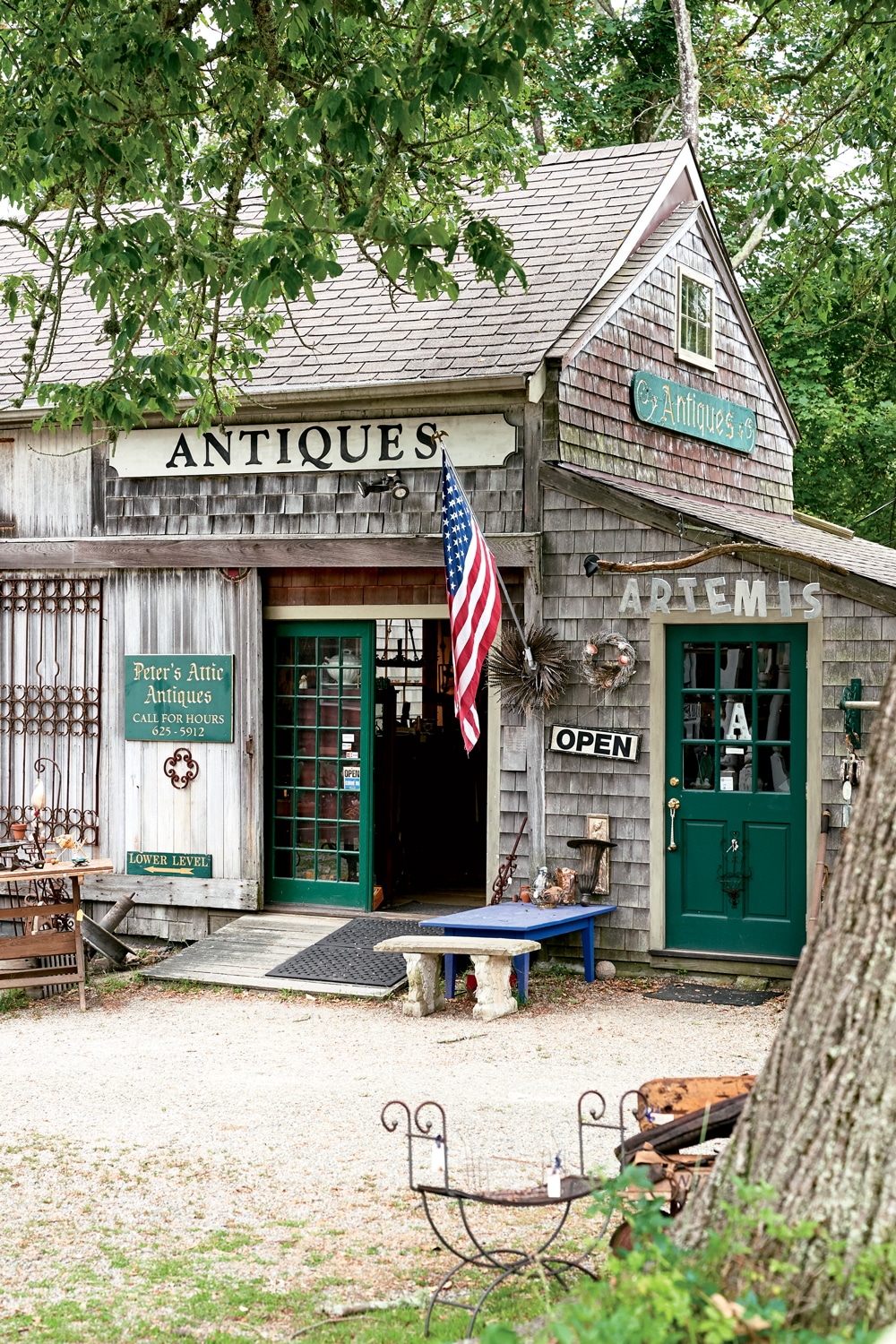
Photo Credit : Mark Fleming
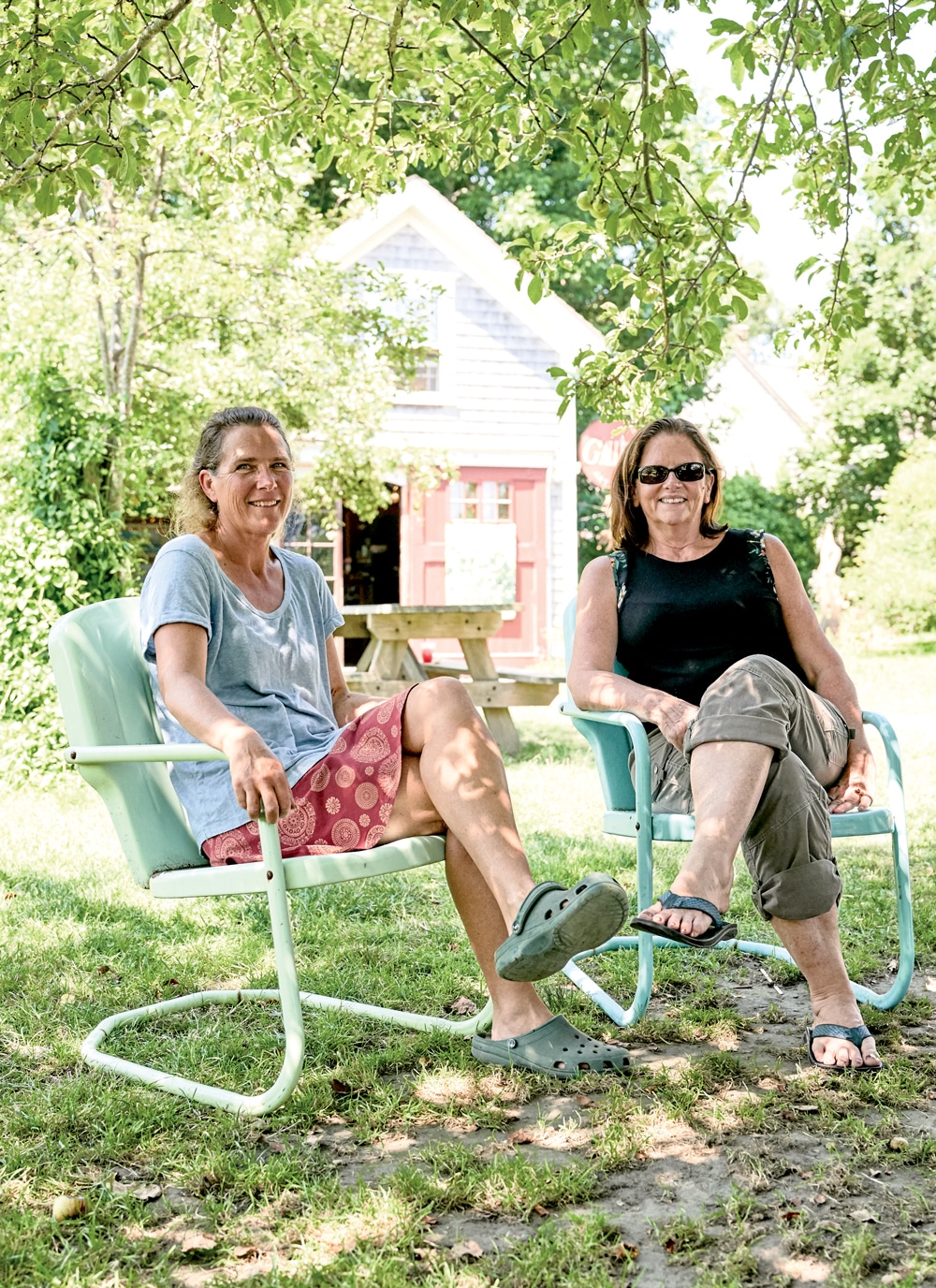
Photo Credit : Mark Fleming
Little Compton is roughly the size of a peanut. Its downtown consists of Wilbur’s General Store, a friendly place that’s been around for 100 years and magically expands when you step inside, traveling back for eight rooms and selling everything you can imagine. Next door, the Commons Lunch has, by all accounts, great chowder, but I’m intrigued by the slice of Jamaica attached to its hip: the Laughin’ Lobstah, a turquoise-trimmed shack showcasing jewelry, shells, and plastic pails.
There’s a library, a white-steepled church, and a green that’s half cemetery. It’s lovely and sleepy, and I heard a rumor that when The Witches of Eastwick was looking for a film location, Little Compton turned it down.
Also, a few paces from the center, there’s a stained glass sign: “The Art Café.” It turns out my fantasy café exists in the middle of nowhere, next door to a perfect 1700s Cape hung with Josie Arkins’s colorful encaustic paintings. The café is magical, accidental, strung with fairy lights, carpeted with worn Oriental rugs. “Arabian Nights” meets “Bohemian Rhapsody.” Except there’s also a freezer where Josie and her husband sell their own farm-raised Treaty Rock beef. A wild bunny hangs out under the apple tree. “And lately,” Josie says, “there’s been a chicken wandering through….”
Putting the Coast in Farm Coast
Did I mention how close everything is? (You can drive the entire Farm Coast in about an hour and a half—but why would you want to?) Or that it’s not a cliché to say there’s water everywhere?
In other words, if you want to sail—like the two guys launching a boat at Fogland Beach on the Sakonnet River, part of Narragansett Bay—it’s right here.
As for fishing—along a breakwater, say—there is riprap (new word for us landlubbers) beyond the Sakonnet Point Club, with views of Sakonnet Light and dizzying drops. I spot clusters of sturdy anglers lining the rocks, armed with poles. (Stop by one of the bait and tackle shops, like Riverside Marine, and you’ll get expert tips on where to go.)
But it’s hot today, so on to the cool stuff—starting with Horseneck Beach State Reservation, in Westport, Massachusetts, near the mouth of Buzzards Bay. First off, there are the Dunes; the uppercase is intentional, as these are serious dunes, like the ones you’d find in the Province-lands of Cape Cod. Traverse this sandscape, and you’ll find yourself on a beach that’s the tip of an 800-acre park on the Atlantic, with a 1½-mile paved walking path along the water and views of the Elizabeth Islands.
The fog descends, but I’ve gotten good tips from a park ranger, who points me to tiny Gooseberry Island, where parking is free but limited (as are crowds). Beaches, both sandy and stony, ring the island—dogs are OK!
Perhaps the best tip is Demarest Lloyd State Park, in Dartmouth, Massachusetts—I feel like an insider when I pull into the parking lot on a sweltering day to see just 11 other cars. By now, I’ve driven past countless silos, farm stands, white farm fences, stone walls, and fields. There’s a loooong entrance to the state park, with an admonition to go slow (I don’t pass another car). A slender sandy path to the beach winds by beach roses, it’s high tide, and I swear there are fewer people on the beach than there are cars. How is that even possible?
It doesn’t matter. The water is perfect.
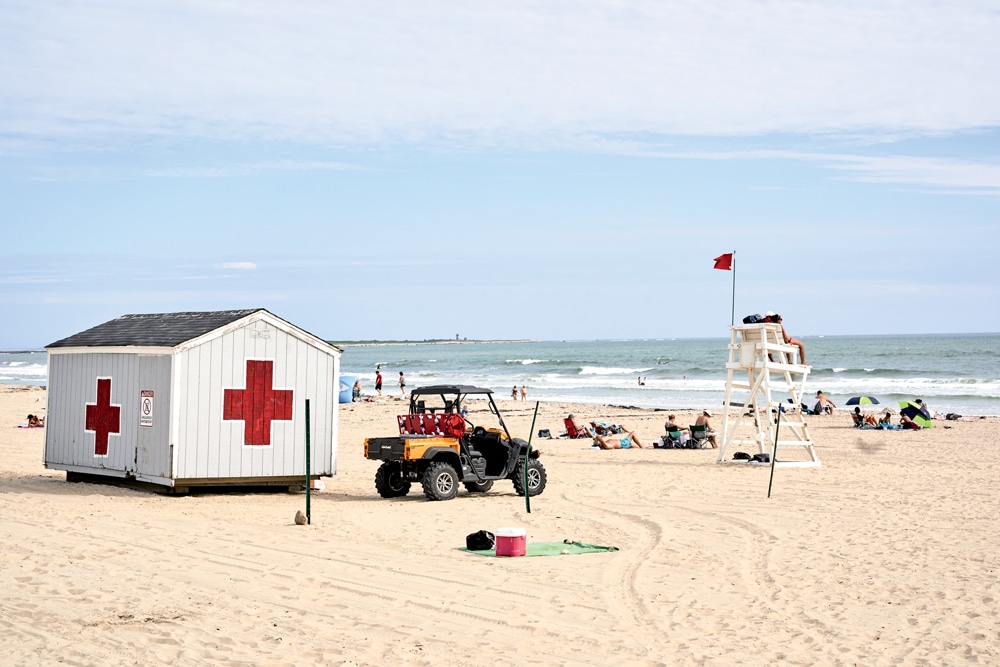
Photo Credit : Mark Fleming
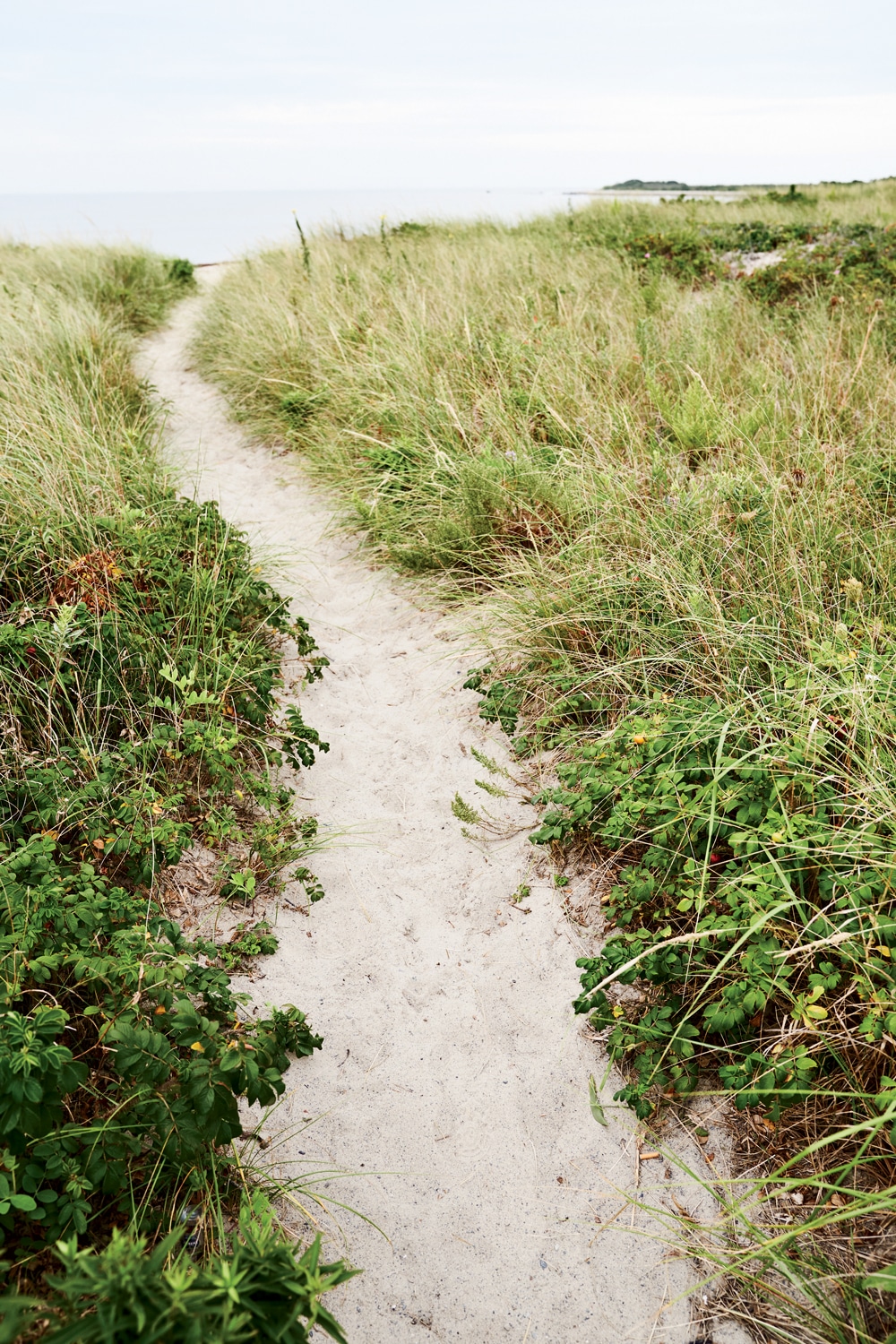
Photo Credit : Mark Fleming
There’s so much more to say. About Gray’s Grist Mill, right on the Massachusetts line, one of the oldest in the country (before 1700), where I watch George Whitley stone-grind local white flint corn into mealy fairy dust that transforms into crispy johnnycakes just across the bridge at a restaurant called the Barn. “How do I get jobs like this?” the miller says, grinning. “Just lucky, I guess.”
Or the beauty of Westport Point Historic District, a fishing village that calls to mind Nantucket’s ’Sconset: little and big houses from the 1700s, slathered in silver shingles, marching down to the water. It’s a true working harbor, with boats like Constant Cravin bobbing in the water beyond Revolution Lobster, where the line of customers is better than all the advertising in the world. Lobster rolls, chowder, stuffies, and the day’s special, a yellowfin tuna salad sandwich. Our yellowfin tuna was caught by Alex on the F/V Perseverance (the boat docked right behind you!) reads a sign at the takeout counter. Boat to mouth—it doesn’t get more personal.
Then there’s Padanaram, a village in the town of Dartmouth, at the end of the Farm Coast in Massachusetts. At the convivial Farm & Coast Market, I taste the region in Eva’s wild greens salad: a bit of farm (greens), a bit of coast (salmon). In a tucked-away spot by the water, homes are draped with fishing nets, a roof strewn with lobster traps, and buoys dangle like oversize earrings against red-painted wood. The harbor is chockablock with boats and masts….
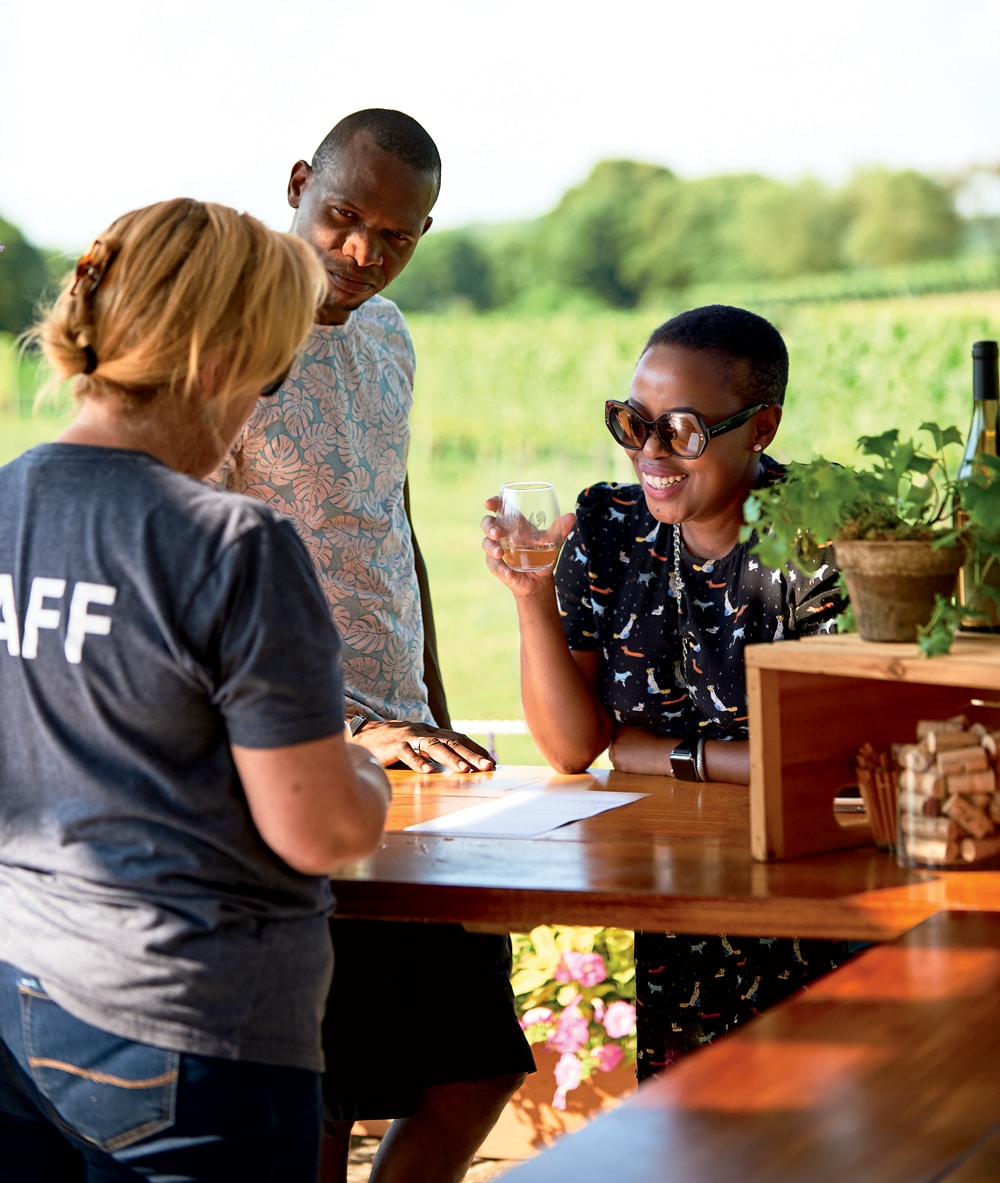
Photo Credit : Mark Fleming

Photo Credit : Mark Fleming
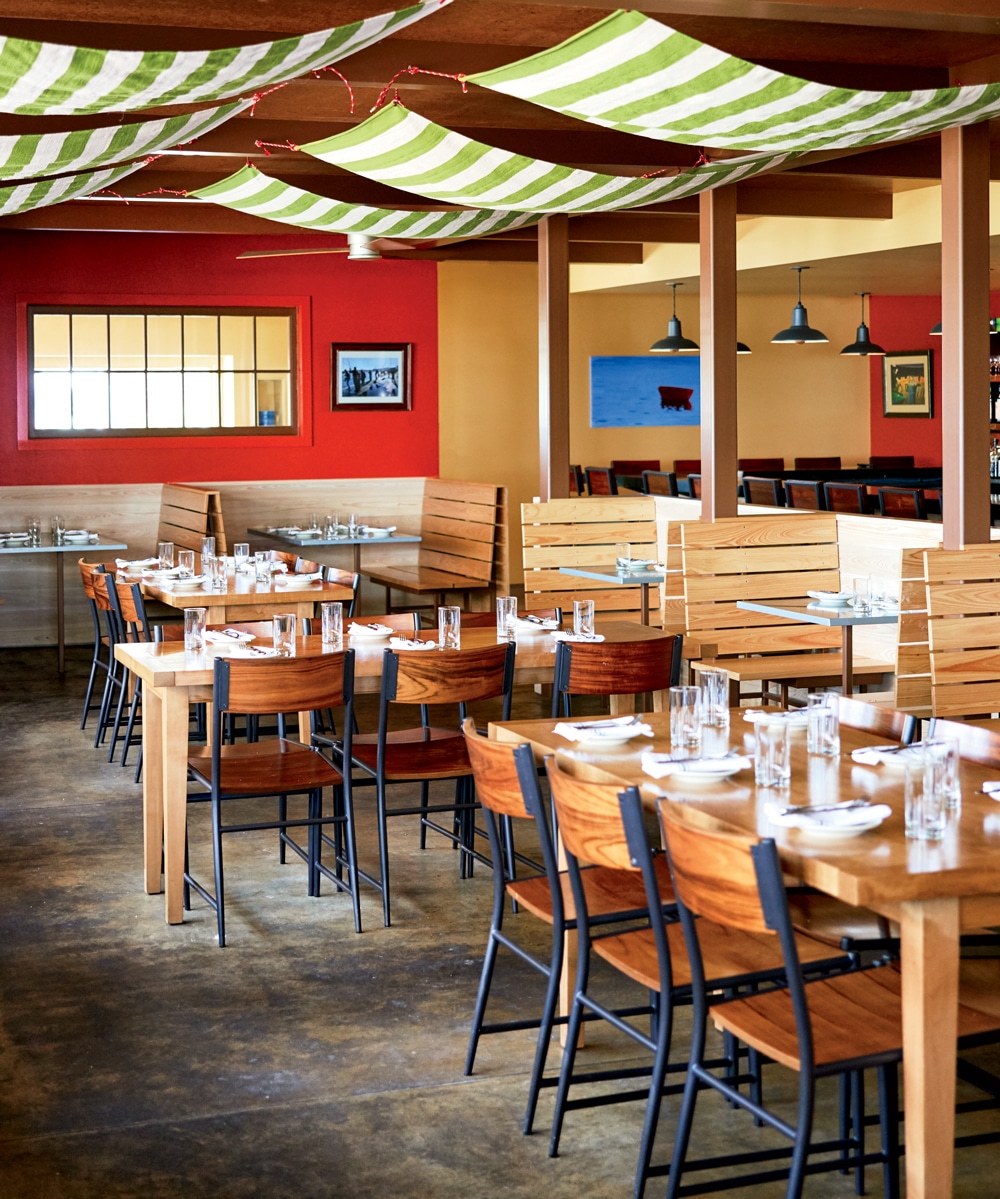
Photo Credit : Mark Fleming
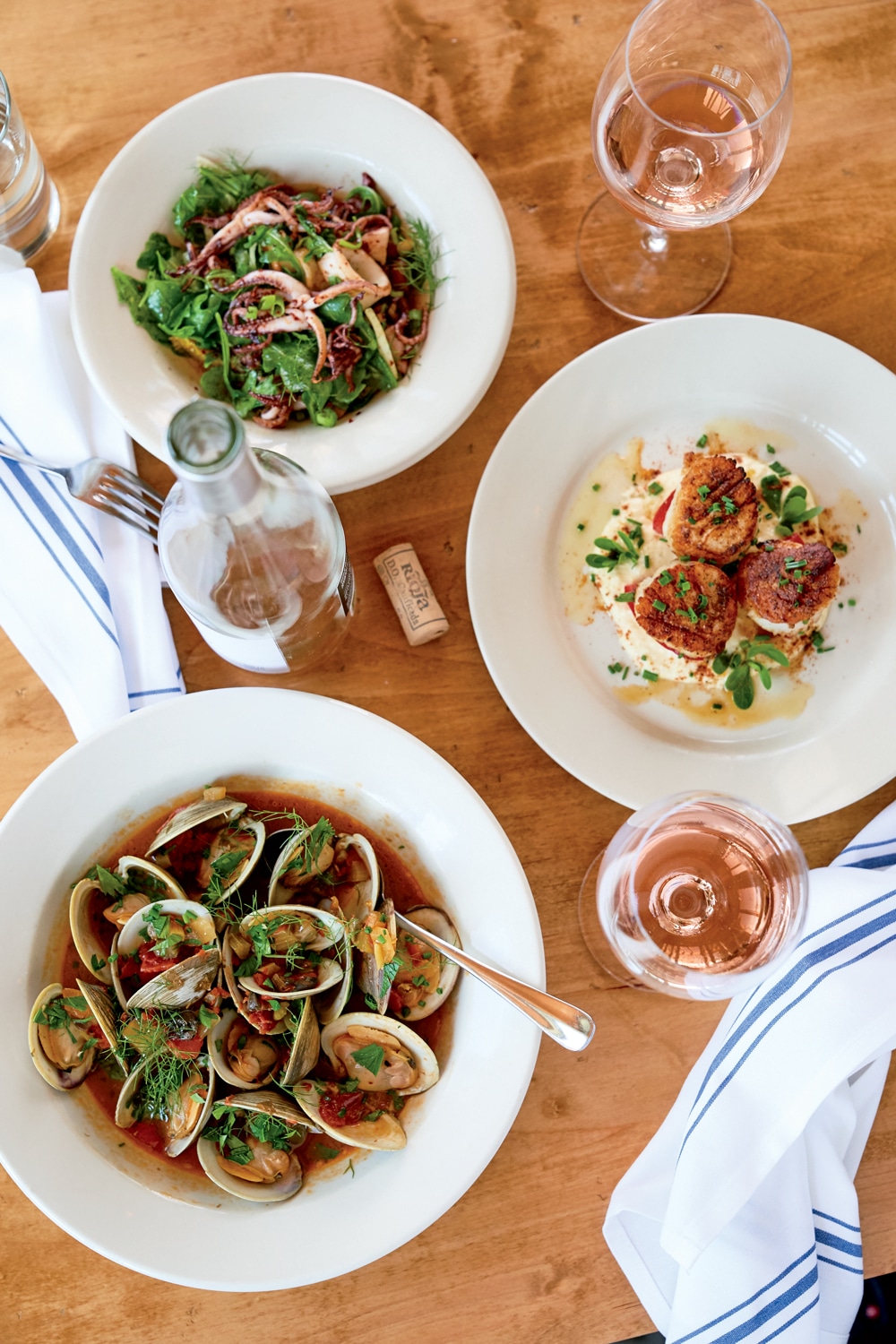
Photo Credit : Mark Fleming
And a Word About Sleep
Sun, sea, scenery … sleep. It’s hard to imagine a prettier place to spend the night than Schoolhouse No. 1, after hobnobbing with artists, taking a salty dip, and huddling over tapas at the Red Dory, downing curls of grilled octopus. Kristin and Adam Silveira have restored the exterior of their Tiverton one-room schoolhouse, built in 1800, with textbook rigor, topped off with a belfry and a 100-year-old school bell. Guests can even ring it, within reason (the sound travels up to three miles). But there’s nothing academic about the interior of this two-bedroom vacation rental—gourmet kitchen, luscious colors—unless you count the antiques. Vintage books for boning up on ancient geography, an eight-day schoolhouse clock. School nostalgia, in other words—possibly the best kind of learnin’ for the vacation-minded.
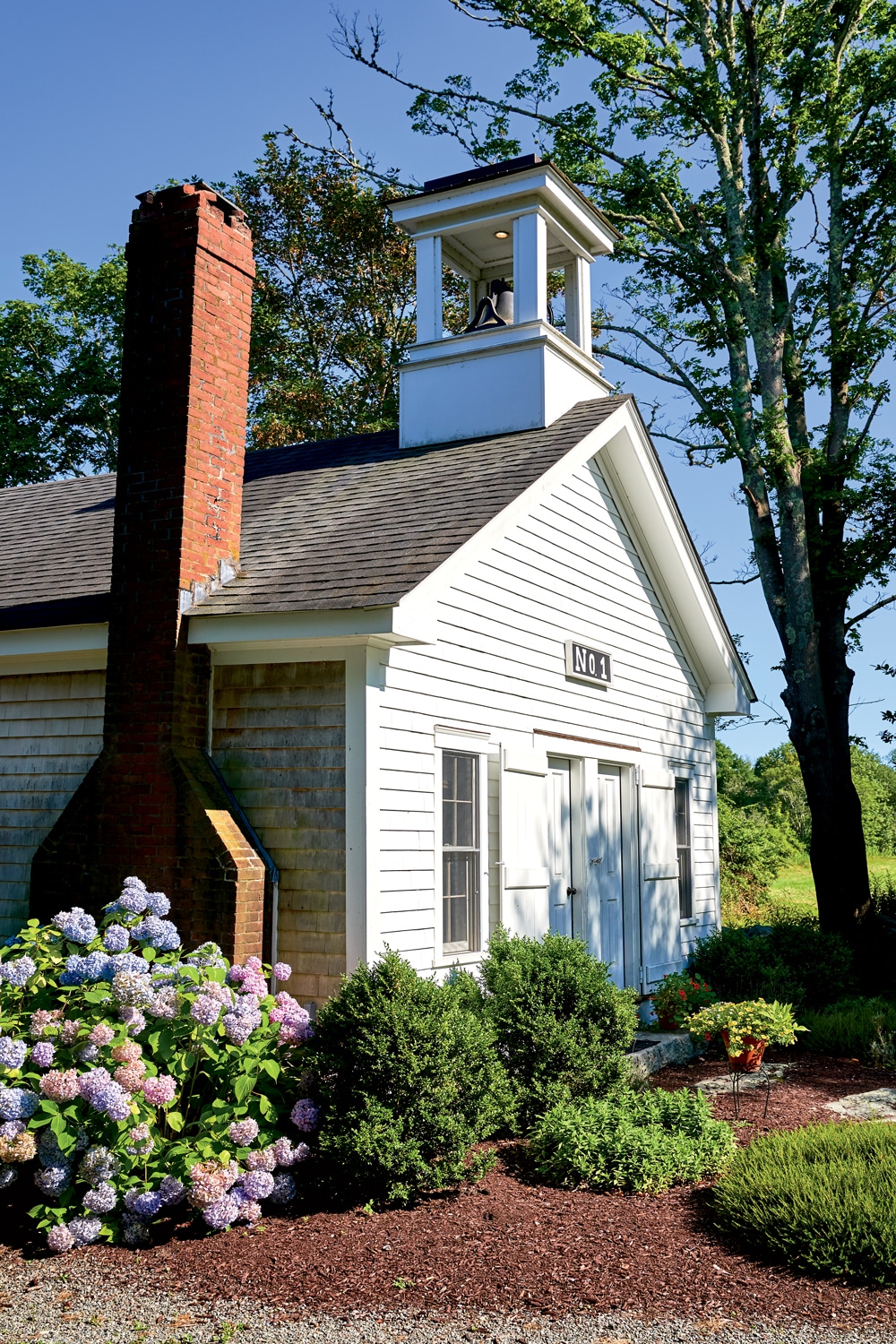
Photo Credit : Mark Fleming
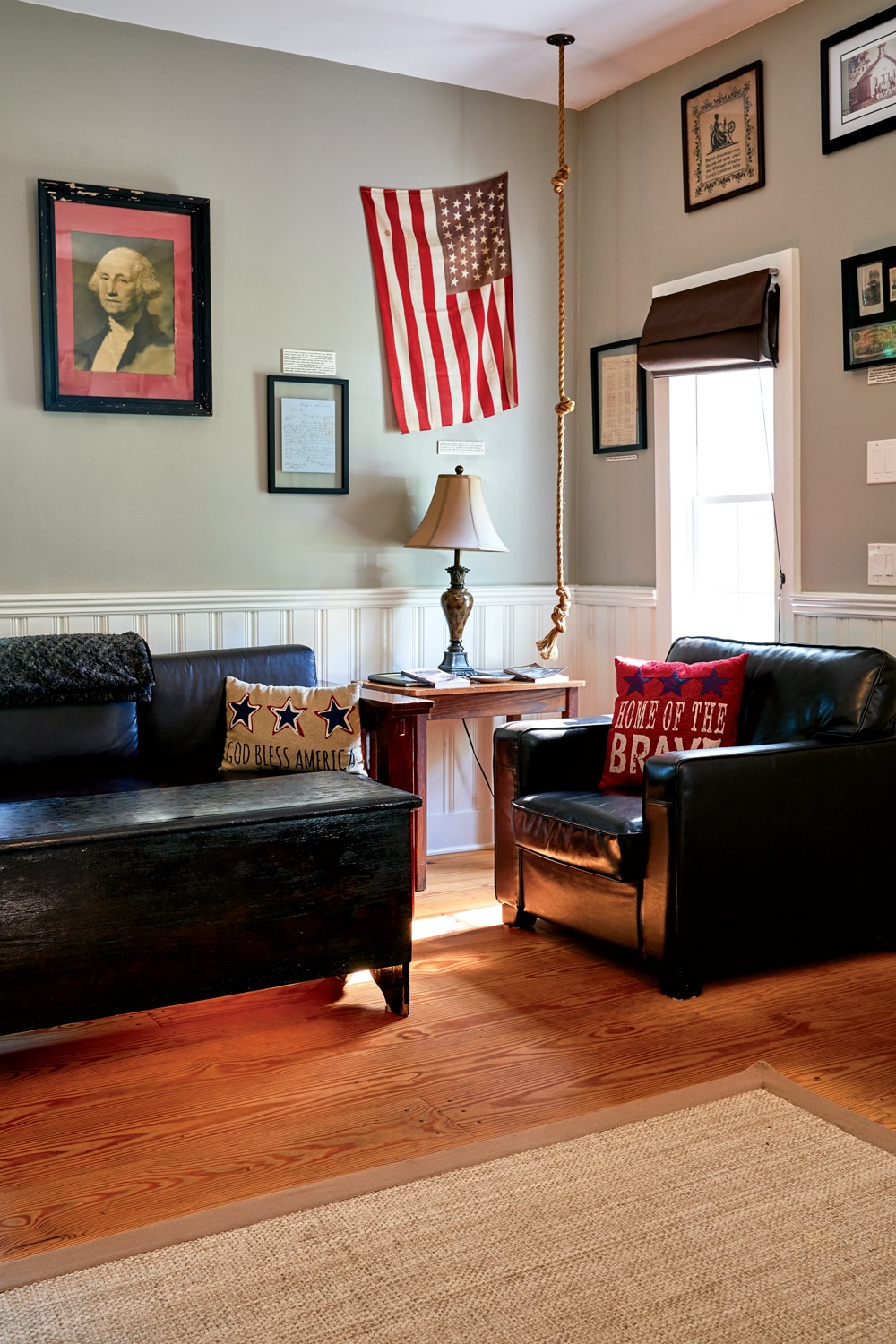
Photo Credit : Mark Fleming
Farming for the Future
The next day, I’m searching for a farmer. More than one person has told me to track down Lucien Lebreux, a local legend. When I finally stumble across Middle Acres Farm, somewhere in Middle-earth (OK, it feels mythical, but it’s actually in Tiverton), it’s the real deal: a worn sign with a cow disappearing into a weather-beaten background, set against red barn shingles that have seen younger days. But the fresh green fields behind, sparkling white fences, and twin silos aiming for the sky are all signs of a flourishing farm, one held to high standards. The resident border collie, Molly, is desperately trying to herd a golf cart that’s zipping between outbuildings, driven by Lucien’s nephew.
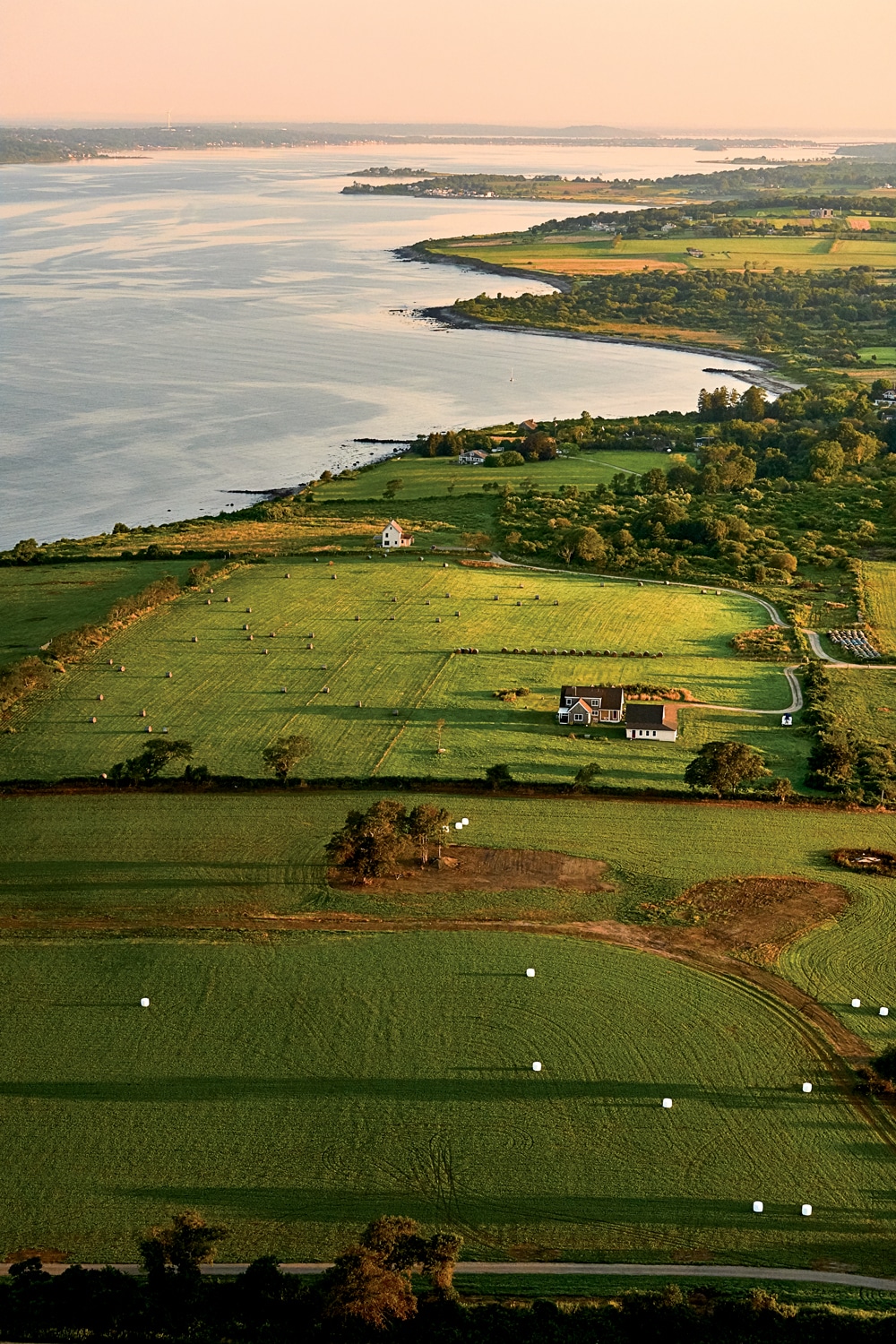
Photo Credit : Mark Fleming
John “Rebel” Brown, from Georgia, is a volunteer here; his trailer sits near a greenhouse bulging with tomato plants. “Anything I can do to help out Lucien, I’m a happy camper,” he says. In true Yankee fashion, Lucien, now 88, reinvented himself in 1997, when the dairy business soured. Lucien built cranberry bogs in his fields and became a cranberry farmer.
Since then, Lucien has guaranteed that his land—several hundred acres—will only ever be sold in one piece, as a farm. Why? The slender old farmer twinkles, but there’s steel in his words, too. “To see it not be a farm?” he asks, a trace of French-Canadian accent flavoring his words. “I worked too damn hard. I worked my whole life….”
It is a different world from the one conjured up by the news I heard of a casino being built on the outskirts of Tiverton. (The casino and hotel are slated to open October 1 of this year.) But the farmland goes on, pressing up against the sea. It is a breathtaking synthesis of agriculture, seascape, and artistry. Broad fields, basking in sunlight, bounded by water.
This Farm Coast is real.
To see more photographs from our visit to the Farm Coast, go to newengland.com/farm-coast-2018.
——————
Feasting on the Farm Coast
With its bounty of fresh-picked produce and just-caught seafood, the Farm Coast is a haven for food lovers, who can sample the region’s flavors at farm stands, markets, and restaurants. Here, Yankee senior food editor Amy Traverso shares some of her favorite refueling stops.
The Back Eddy, Westport, MA: With harbor views all around, this seafood mainstay could get by on location alone, but the corn-and-clam chowder and chouriço-stuffed clams point to a kitchen with real ambition. 508-636-6500; thebackeddy.com
Commons Lunch, Little Compton, RI: Old-school classics such as meatloaf, western omelets, fried clams, and grapenut pudding draw a multigenerational crowd of happy diners. 401-635-4388
Evelyn’s Drive-in, Tiverton, RI: Overlooking lovely Nanaquaket Pond, this waterside eatery (complete with boat parking out back) is the place to go for fluffy fried clam cakes with a cup of Rhode Island–style clear-broth chowder. 401-624-3100; evelynsdrivein.com
Farm & Coast Market, South Dartmouth, MA: Serving next-level pastries, salads, and sandwiches, this stylish market and café is the kind of local hangout every town should have. For breakfast, don’t miss the smoked salmon sandwich. 774-992-7093; farmandcoastmarket.com
Gray’s Ice Cream, Tiverton, RI: Of all the ice creameries on the Farm Coast, Gray’s wins for its rich, custardy base and giant scoops. The go-to flavor is coffee—a natural choice in the state that invented coffee milk. 401-624-4500; graysicecream.com
Little Moss, South Dartmouth, MA: This chic boîte spins local produce and seafood into gorgeous small plates, pastas, and charcuterie boards. Come for a cocktail; stay for dinner. 508-994-1162; littlemoss.com
Provender, Tiverton, RI: Here’s the spot to pick up picnic supplies for the beach. We recommend the Scarlet Letter—turkey, greens, tarragon mayo, and cranberry sauce—and the buttermilk cake, which is as moist as English pudding. 401-624-8084; provenderfinefoods.com
The Red Dory, Tiverton, RI: Steve Johnson is the Farm Coast’s top chef, and his Mediterranean-inspired eatery boasts the best local produce, excellent pastas and ceviches, and sunset views of the Sakonnet River. 401-816-5001; reddoryrestaurant.com
Revolution Lobster, Westport, MA: Right at the tip of Westport Point, this fish market and eatery does “sea-to-table” takeout (there are picnic tables outside). That means buttermilk clam biscuits, lobster rolls with brown butter and ginger-scallion oil, and blueberry pie for dessert. 508-675-0131; revolutionlobster.com
Annie Graves
A New Hampshire native, Annie has been a writer and editor for over 25 years, while also composing music and writing young adult novels.
More by Annie Graves

